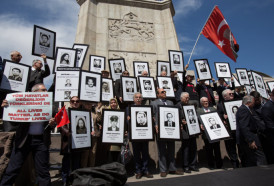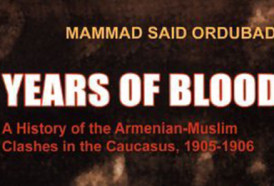by Khalid Taimur Akram
Pakistan has once again proven that it is not just a nation with a powerful military but one with principles rooted in restraint, ethics, and diplomacy. From May 7 to May 10, during the intense four-day Indo-Pakistan conflict, India resorted to deliberate provocations and unprovoked aggression, hoping to push Pakistan into a trap of escalation. But what followed was not merely a retaliatory campaign; it was a masterclass in strategic restraint, ethical warfare, and unmatched military prowess. Pakistan responded not with panic or indiscriminate force, but with a precisely calibrated operation that reinforced its status as a responsible nuclear power and a cornerstone of regional stability.
India has been doing aggression for many years as part of a long, sustained campaign of hostility, misinformation, and hegemonic ambitions. India has continuously tried to label Pakistan as a “state sponsor of terrorism” in global forums and has weaponized institutions like the FATF and manipulated narratives at the United Nations to isolate Pakistan diplomatically. Western countries were favoring India and tried to isolate Pakistan through sanctions and arming India with mass weapons, helping India's hegemony in the Indian Ocean. This smear campaign ignored Pakistan’s significant achievements in counterterrorism, its robust financial regulations, and genuine peace initiatives.
April 23, 2025, was the beginning trigger for India’s latest military misadventure. A gruesome attack in Indian-occupied Kashmir killed 26 tourists, an act widely condemned by Pakistan. Yet, India wasted no time in blaming Islamabad without evidence, a pattern consistent with its history of false flag operations. This tragedy was weaponized as a pretext for launching an aggressive campaign. Diplomatic norms were shredded. India unilaterally suspended the Indus Waters Treaty, expelled Pakistani diplomats, harassed Kashmiri students in its cities, and gave Pakistani nationals 48 hours to leave under the SAARC Visa Exemption Scheme. It was not just a reaction; it was pre-planned escalation by India.
Pakistan, despite being provoked on multiple fronts, remained committed to dialogue and diplomacy. However, when India crossed the red line by launching so-called Operation Sindoor on the night of 6–7 May, which killed innocent civilians and damaged civilian infrastructure, Pakistan could no longer remain silent. From May 8 to 10, Pakistan launched a surgical, multidimensional counterstrike focusing solely on Indian military assets and avoiding civilian areas. It was a message that Pakistan would never initiate aggression, but neither would it allow its sovereignty to be violated with impunity.
The Pakistan Air Force destroyed six Indian fighter jets, including three French Rafales that India had boasted about as “game-changers.” Su-30s and MiG-29s also fell victim to Pakistan’s air superiority. More than 77 Indian drones were neutralized, including many supplied by Israeli firms. In a stunning display of precision, Pakistan’s JF-17 Thunders obliterated India’s S-400 air defense system in Adampur, exposing the vulnerability of India’s much-hyped weapons platforms. Pakistan didn’t stop there—its cyber warfare units conducted targeted strikes against Indian digital infrastructure, disabling critical command and control networks.
On May 10, the Pakistan Armed Forces launched a coordinated strike named Operation Bunyan-un-Marsoos, a solid, swift, and proportionate military response hitting 26 Indian targets, including airbases, missile storage sites, and logistics hubs. Confirmed damage was reported at Udhampur, Pathankot, Suratgarh, Sirsa, Adampur, and Bathinda, among others. The destruction of BrahMos missile depots in the Beas region and the decimation of India’s Uri field depot were symbolic strikes, underlining that Pakistan’s response was not retaliation; it was strategic, methodical, and morally justifiable under Article 51 of the UN Charter.
India’s Operation Sindoor collapsed in the face of Pakistan’s cohesive and unified response. The myth of Indian military superiority was shattered. India’s decades-old strategy of dominating the escalation ladder—where it strikes first and forces Pakistan into a corner, no longer holds. The so-called icons of India’s modernization (the Rafales and the S-400), became relics of a failed gamble. The Indian Air Force was left scrambling, and India’s defense establishment was forced to confront a sobering reality: Pakistan now possesses not just tactical parity but strategic deterrence credibility. But Pakistan’s success was not only military. It emerged diplomatically stronger. Countries that had once hesitated to support Pakistan now recognized its right to self-defense. Islamabad’s careful avoidance of civilian casualties, its call for de-escalation, and its refusal to attack Indian cities earned it global admiration. In contrast, India’s reckless actions, such as civilian killings, false flags, and suppression of dissent, reinforced its image as a belligerent state willing to sacrifice lives for political gain.
Achievements of Pakistan
Pakistan emerged with strategic superiority on multiple fronts in achieving its core objectives with precision and national unity. Firstly, Pakistan successfully defended its territorial sovereignty with minimal force yet maximum impact. Through the well-coordinated and swift military operation codenamed Operation Bunyan un Marsoos, Pakistan neutralized India’s unprovoked aggression without escalating the conflict into a prolonged war. Pakistan not only upheld deterrence but also delivered a calculated and legitimate response to India’s misadventure, exposing the vulnerability of India’s much-hyped military superiority.
Pakistan's military displayed tactical brilliance, outmaneuvering India’s air and ground forces. Advanced Chinese-origin weaponry, including drones and missile systems, proved superior to Western-supplied Indian platforms like Rafale jets, Israeli Harop drones, and British UAVs. The successful downing or neutralization of these technologies debunked India’s image of being a “net security provider” in the region. Moreover, the war undermined Western military prestige by demonstrating that indigenous and Chinese-developed systems perform very well.
On the diplomatic front, Pakistan is outshining others, garnering international support, and earning a reputation. While India tried to project Pakistan as the aggressor, the global community saw through the fog of propaganda. The United States, for the first time in years, intervened and pushed for a ceasefire. Furthermore, the Kashmir issue has been officially reopened on the international stage, with talks expected between Islamabad and New Delhi under international mediation. It is one of the biggest diplomatic wins for Pakistan. This shattered India’s long-held stance of refusing external involvement.
Strategically, the US's regional dominance was tested. Now the US has opened to remain relevant and a player in the region. Internationally, Pakistan's resilience was met with respect. China, Türkiye, Saudi Arabia, Gulf nations, and numerous others stood firmly with Pakistan. The IMF released its scheduled tranche, despite India's trying to pressure the IMF to not provide loans. The West, presumed by India to be on its side, adopted a more neutral tone, recognizing that South Asia cannot afford India’s aggressive adventurism.
The civil-military leadership, political factions, and society at large came together in a display of unprecedented solidarity. Pakistan's narrative gained ethical credibility by telling that India’s Hindutva ideology is not just a destabilizing force in the region but also in the whole world.
With China's backing of Pakistan, both militarily and diplomatically, Pakistan-China friendship has emerged stronger. This war symbolized not just a regional battle but a testing ground between Chinese and Western military technologies, with Pakistan as the proving ground of Beijing’s rising prowess.
Professionalism of our Armed Forces
Everyone praised the professionalism of the Pakistan Armed Forces, which became a global model of ethical military conduct under fire. Pakistan’s strategy of escalation for de-escalation, which forced India into a ceasefire and prevented a full-blown war. Operation Bunyan al-Marsoos and downing the Indian Rafales, or jets, while a military success, was also a demonstration of the government’s commitment to defending national integrity without compromising on ethical standards, showcasing not only military might but also strategic wisdom. The massive demonstrations expressed unwavering public support for the armed forces. Citizens from all walks of life, including civil society, students, professionals, and religious scholars, praised the bravery and discipline of the Pakistani military. The unity displayed across the nation reinforced the idea that national security is not just the responsibility of the armed forces but a shared commitment of the entire nation. The Pakistan Army and Pakistan Air Force, in particular, demonstrated unmatched coordination, technological modernization, and unwavering courage.
Pakistan’s message was clear: Peace is our priority, but sovereignty is non-negotiable. The four-day war proved that aggression cannot subdue a nation built on resilience, principle, and unity. Pakistan is a proactive force capable of defending its interests, upholding international law, and leading with integrity.
India’s attempts to isolate and dominate Pakistan have failed. Its propaganda has collapsed under the weight of Pakistani resolve. In contrast, Pakistan has emerged stronger, more united, and more respected. The four-day conflict was a triumph of truth over lies, of ethics over aggression, and of peace over hegemony. And in that, Pakistan did not just win a war, it reaffirmed its rightful place as a responsible regional power.
Khalid Taimur Akram is an Executive Director, Pakistan Research Center for a Community with Shared Future (PRCCSF), Islamabad.
AzVision.az
More about:
















































